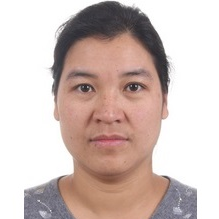Seismic Response Analysis of Underground Structure
A special issue of Buildings (ISSN 2075-5309). This special issue belongs to the section "Building Structures".
Deadline for manuscript submissions: 31 July 2024 | Viewed by 2820
Special Issue Editors
Interests: underground structure; tunnel seismic response; numerical simulation method; analytical method; seismic resistance
Special Issues, Collections and Topics in MDPI journals
Interests: construction methods of underground structures; seismic response of tunnels; failure mechanism of tunnels across fault during construction and in earthquakes; low-carbon strategy of underground engineering
Interests: analytical methods of tunnels; intelligent geotechnical engineering; urban underground engineering; machine learning methods; dynamic analysis of underground structure; optimization theory of underground engineering
Interests: soil structure interaction; artificial boundary condition; theoretical and numerical methods; seismic resistance of underground engineering; seismic response analysis method; seismic reinforcement method
Special Issue Information
Dear Colleagues,
This Special Issue aims to encourage and enhance the role of mechanics, dynamics, analytical methods and other disciplines in relation relate to earthquake engineering by providing opportunities for the publication of research into applied mathematicians, engineering and other applied sciences adjacent to the field of earthquake engineering and geotechnical engineering.
Fields Covered:
- Seismology and geology relevant to earthquake engineering problems, with a particular emphasis on modeling, methodologies and the consideration of their effects on the analysis and design of structures.
- Wave propagation, wave scattering and dynamic crack propagation in soils and rocks under elastic or inelastic material behavior.
- Dynamic constitutive behavior of materials.
- Dynamic interaction problems (soil–structure interaction, fluid–structure interaction and tsunamis if only related to its geotechnical and structural systems).
- Seismic analysis and design of steel structure and tunnels, metro station, retaining walls, dams, slopes.
- Instrumentation and experimental methods in earthquake engineering.
- Applied mathematical methods and artificial intelligence for earthquake engineering analysis and design.
- Performance-based seismic design of structures.
- Seismic reinforcement of civil engineering structures.
- Probabilistic methods in earthquake engineering including risk analysis and reliability earthquake case histories and lessons learned from catastrophic ground motions.
- Earthquake case histories and lessons learned from catastrophic ground motions only if they include modeling and geotechnical/structural analysis.
- Design and construction of anti-seismic measures in underground structures.
- Techniques related to scale laws, materials, model fabrication and data analysis in underground structure model tests.
Dr. Jingqi Huang
Dr. Xu Zhao
Dr. Fanchao Kong
Dr. Huifang Li
Guest Editors
Manuscript Submission Information
Manuscripts should be submitted online at www.mdpi.com by registering and logging in to this website. Once you are registered, click here to go to the submission form. Manuscripts can be submitted until the deadline. All submissions that pass pre-check are peer-reviewed. Accepted papers will be published continuously in the journal (as soon as accepted) and will be listed together on the special issue website. Research articles, review articles as well as short communications are invited. For planned papers, a title and short abstract (about 100 words) can be sent to the Editorial Office for announcement on this website.
Submitted manuscripts should not have been published previously, nor be under consideration for publication elsewhere (except conference proceedings papers). All manuscripts are thoroughly refereed through a single-blind peer-review process. A guide for authors and other relevant information for submission of manuscripts is available on the Instructions for Authors page. Buildings is an international peer-reviewed open access monthly journal published by MDPI.
Please visit the Instructions for Authors page before submitting a manuscript. The Article Processing Charge (APC) for publication in this open access journal is 2600 CHF (Swiss Francs). Submitted papers should be well formatted and use good English. Authors may use MDPI's English editing service prior to publication or during author revisions.
Keywords
- earthquake engineering
- underground structure
- soil–structure dynamic interaction
- analytical method
- numerical method
- experimental method
- material constitutive
- seismic response
- seismic reinforcement








